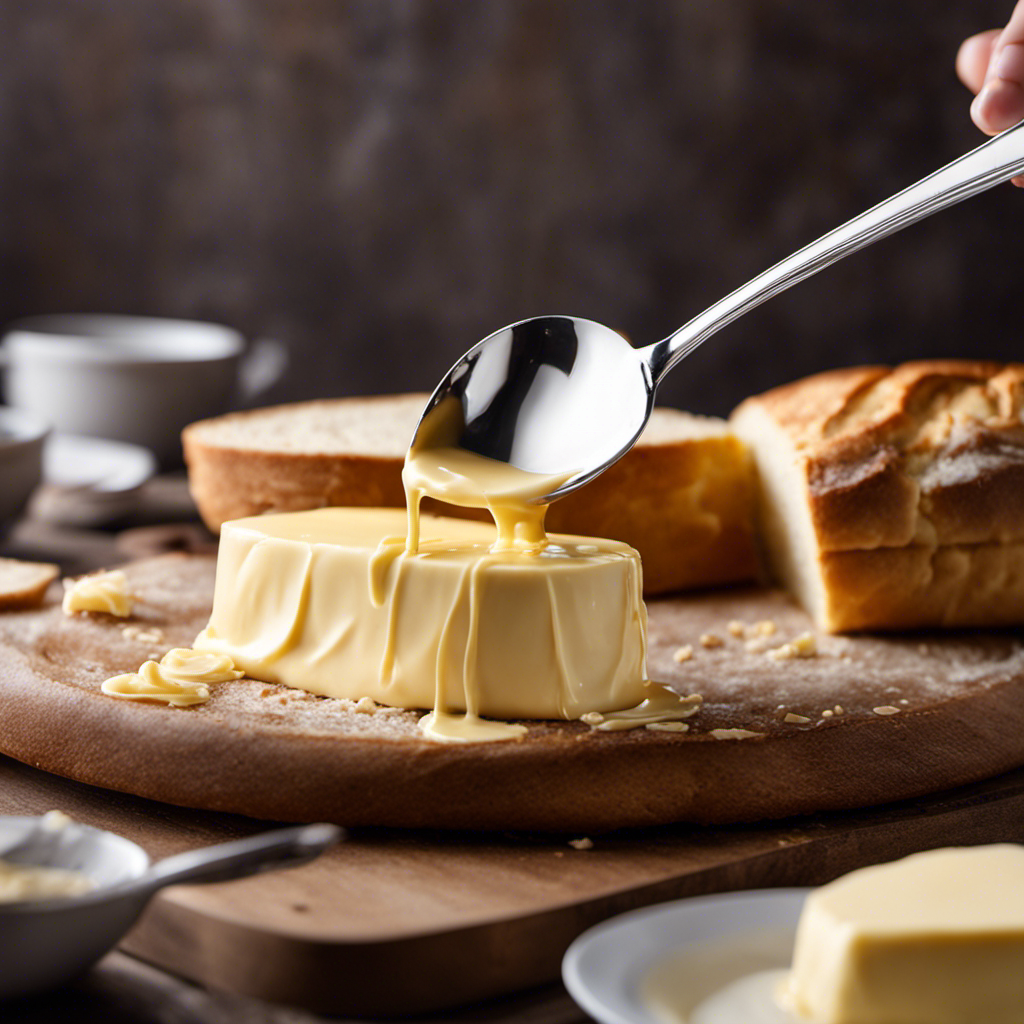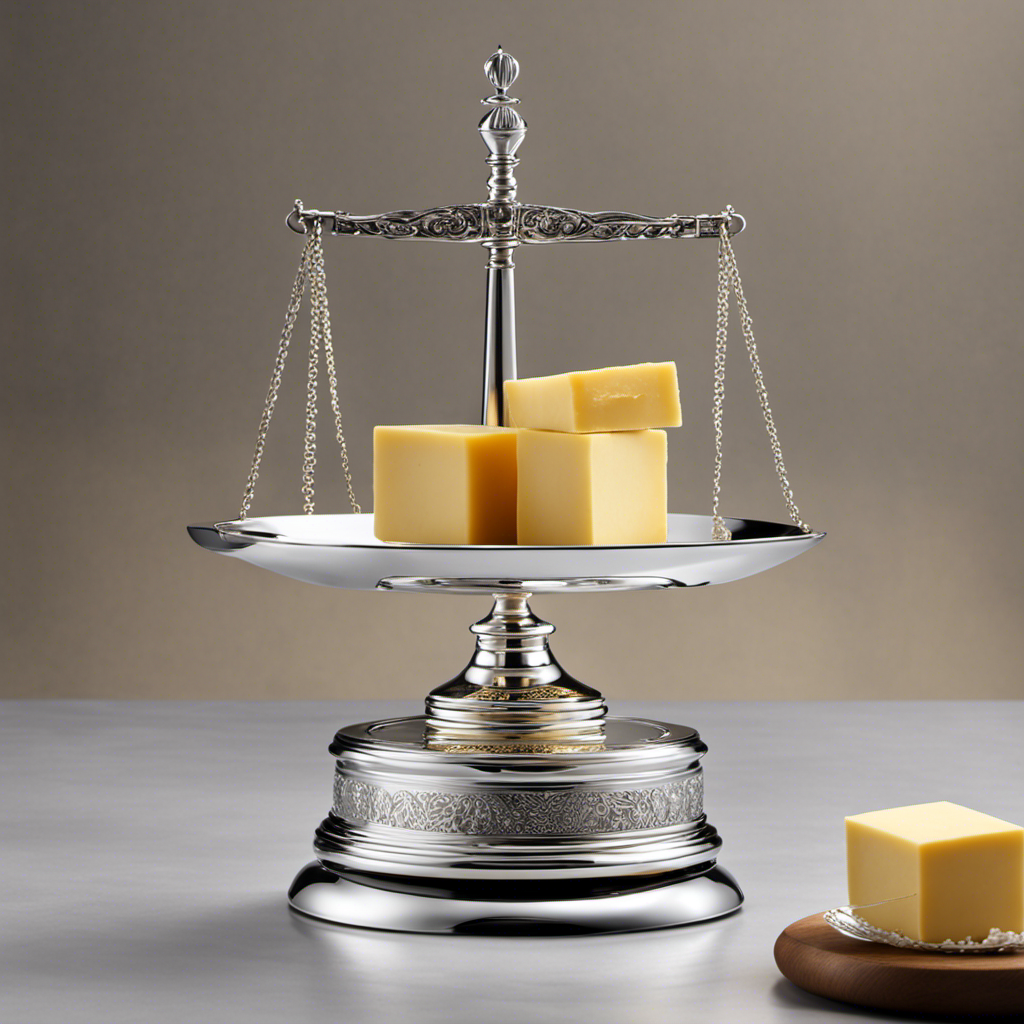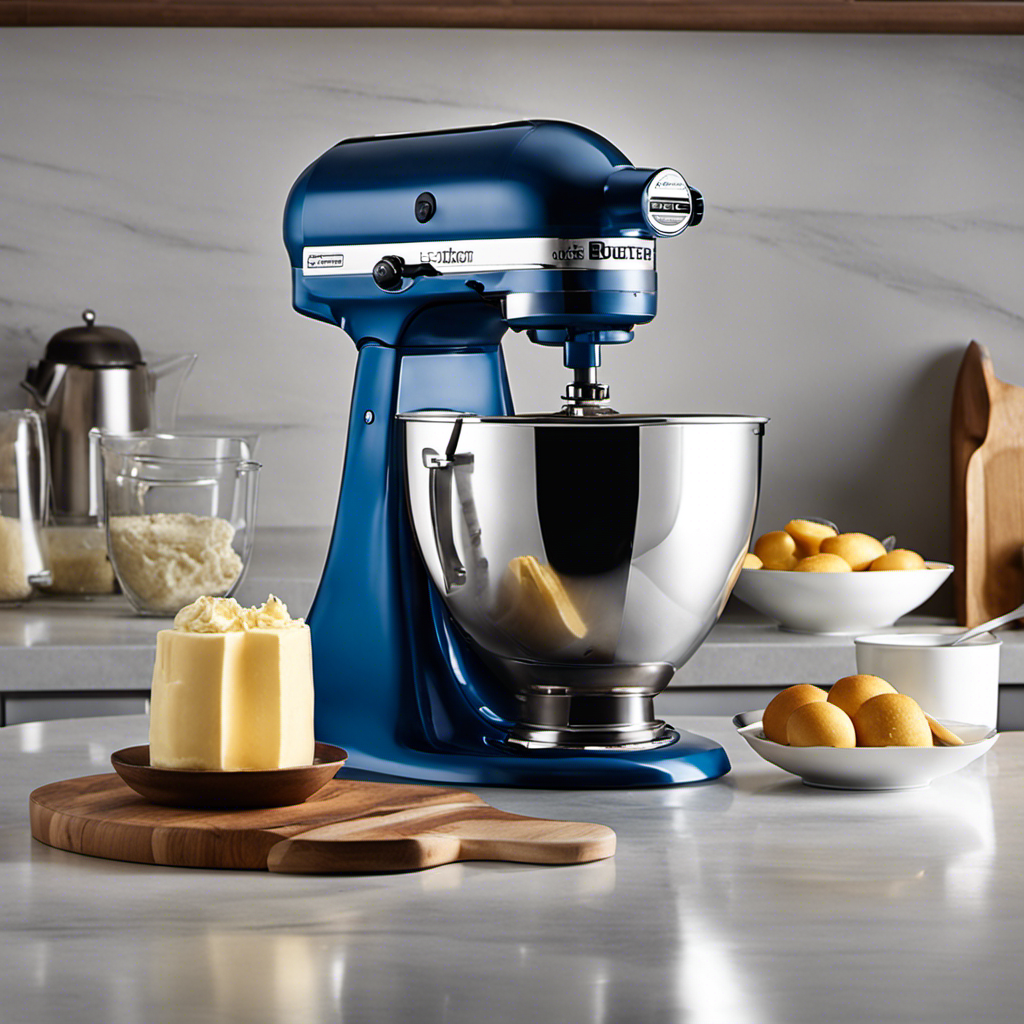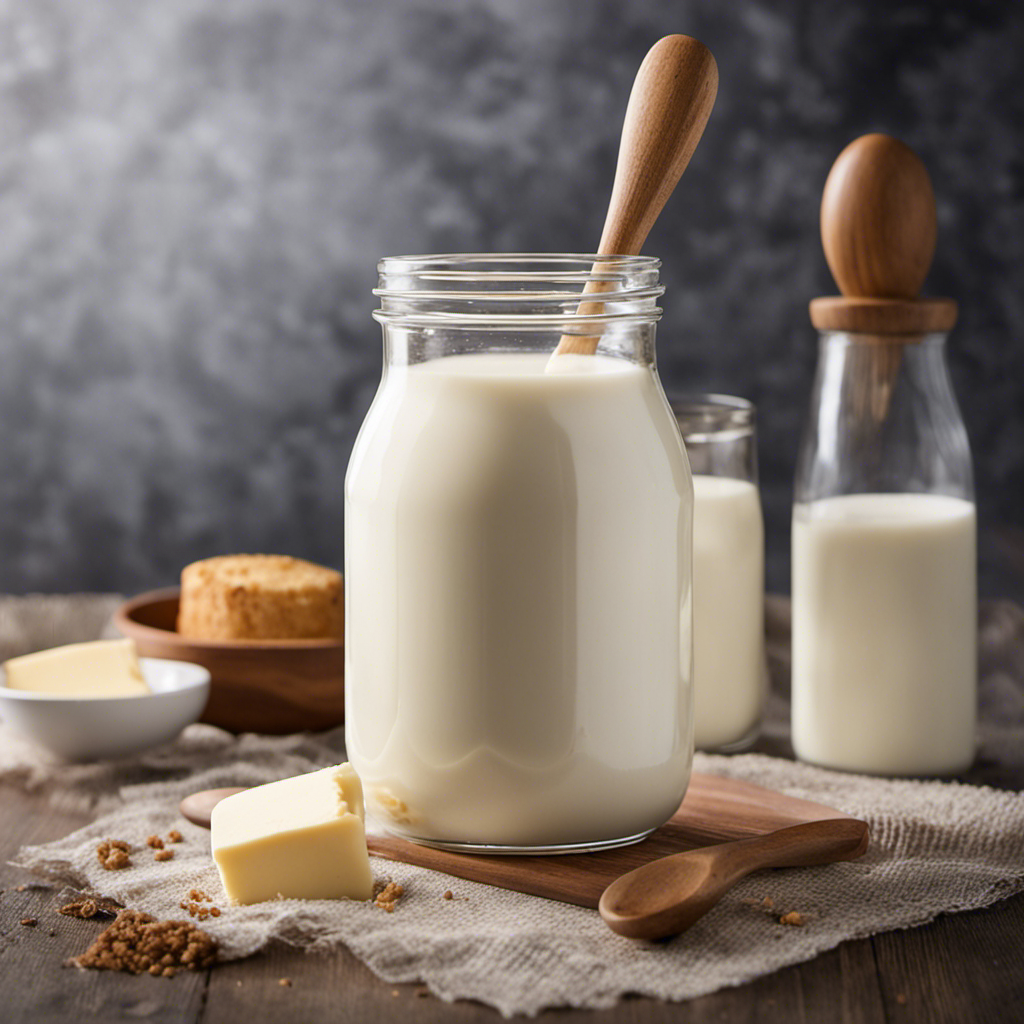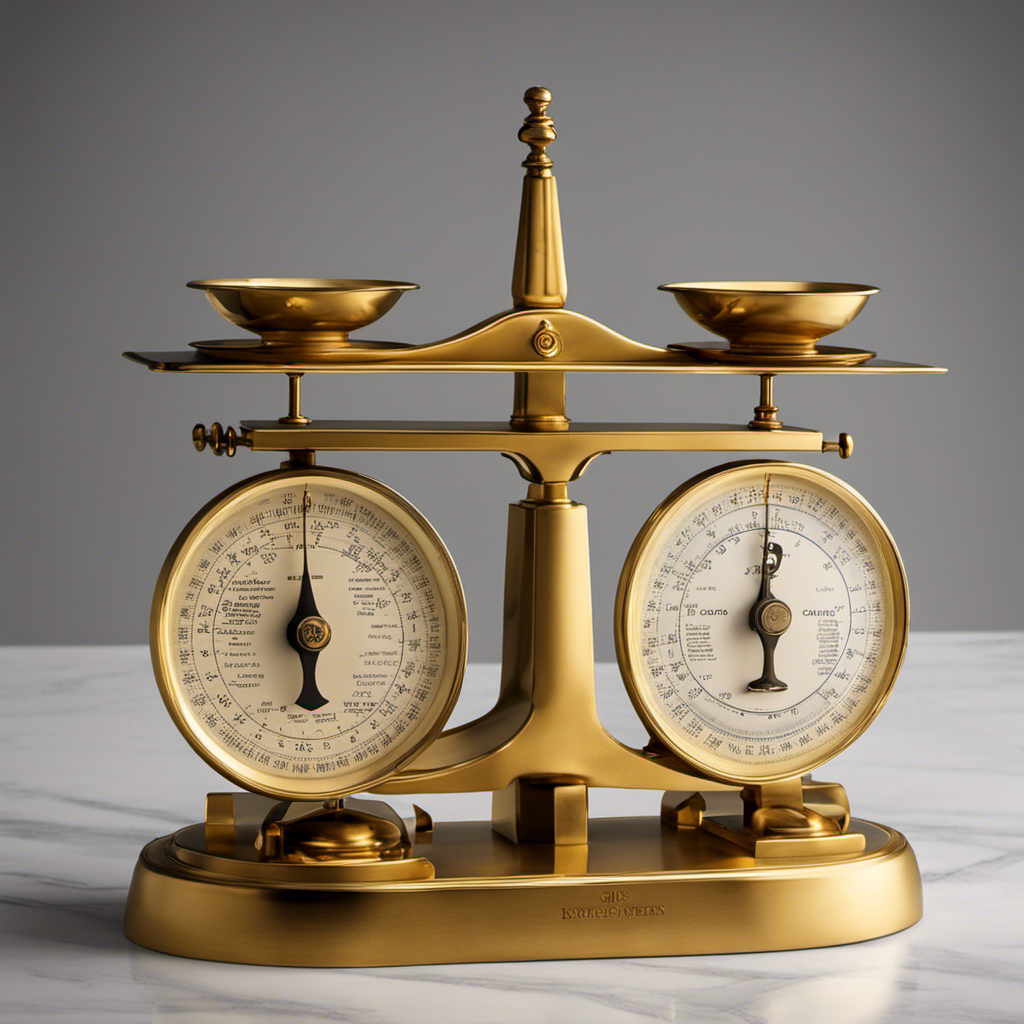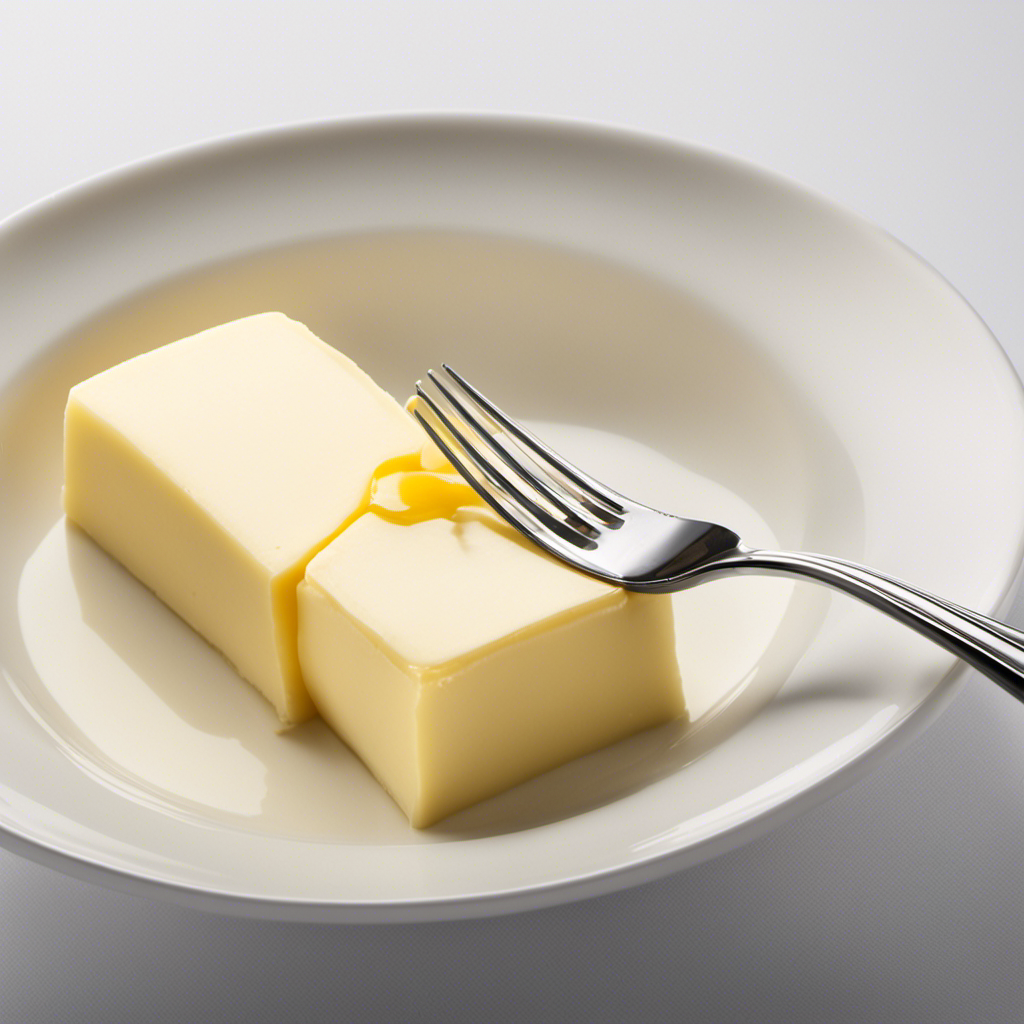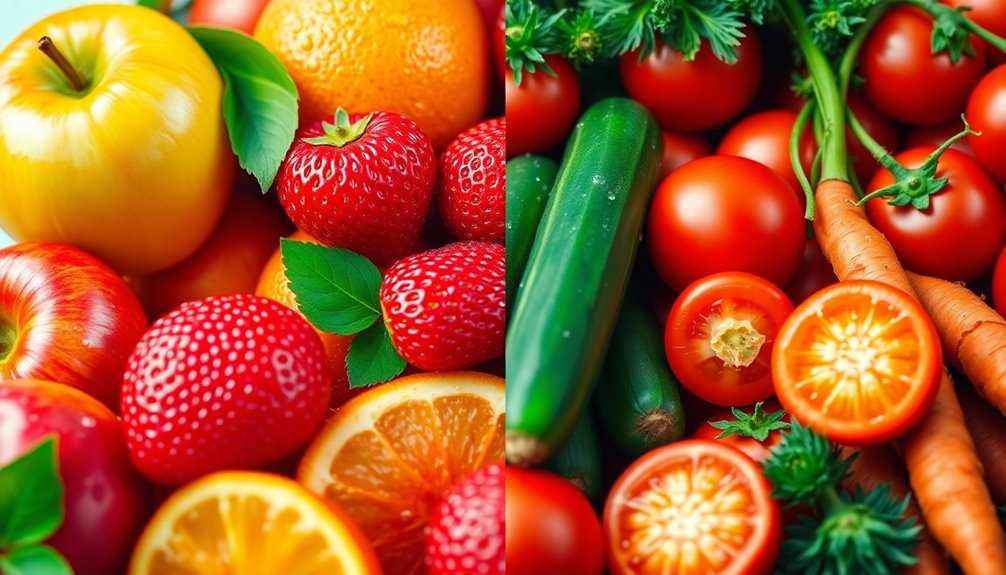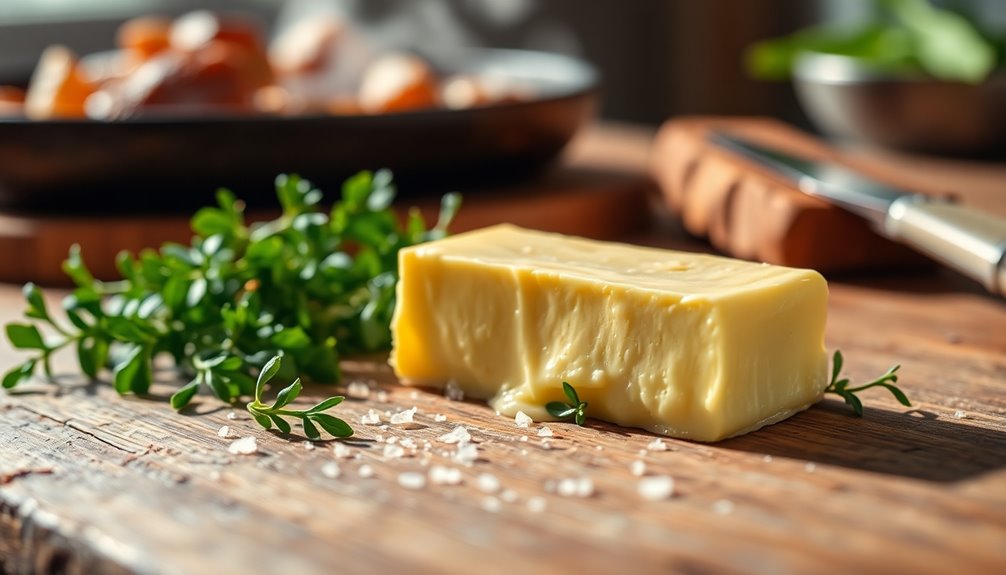I have always been curious about the actual amount of 5 tablespoons of butter. Is it a small portion or a large one?
Well, in this article, I’m going to answer that question for you. We’ll dive into different measurement systems and conversions, explore the weight of 5 tablespoons of butter, and learn how to measure it without a scale.
Plus, I’ll share some common mistakes to avoid and tips for accurately measuring butter.
Get ready to become a butter-measuring expert!
Key Takeaways
- 5 tablespoons of butter is approximately 75 grams in the metric system.
- In the imperial system, 5 tablespoons of butter is equal to about 1/3 cup.
- In the United States customary system, 5 tablespoons of butter is equivalent to around 2.5 ounces.
- Accurate measurements are important for consistent recipe results and to avoid ingredient miscalculations.
Different Measurement Systems and Conversions
Converting measurements can be tricky, but it’s important to know how much 5 tablespoons of butter is in other measurement systems.
When it comes to measurement systems, there are various units used around the world. In the metric system, 5 tablespoons of butter is equivalent to approximately 75 grams. This can be useful when following recipes from different countries or when using a kitchen scale that measures in grams.
In the imperial system, 5 tablespoons of butter is equal to about 1/3 cup. This is helpful for those who prefer using cups as a measurement.
Additionally, in the United States customary system, 5 tablespoons of butter is equivalent to around 2.5 ounces.
Having knowledge of these butter equivalents in different measurement systems can make cooking and baking a much smoother process.
Understanding the Importance of Accurate Measurements
When it comes to cooking, consistency in recipe results is key. There’s nothing worse than spending time and effort on a dish, only to have it turn out completely different from what you expected.
By understanding the importance of accurate measurements, you can ensure that your recipes turn out the way they’re supposed to, every single time.
Avoiding ingredient miscalculations is another crucial aspect of cooking. One small mistake in measuring can throw off the entire balance of flavors and textures, resulting in a disappointing end result.
Consistency in Recipe Results
It’s important to follow the recipe instructions precisely to ensure consistent results. When it comes to baking, using the right ingredients is crucial.
For example, using different butter brands can affect the taste and texture of your baked goods. Some brands have a higher fat content, resulting in a richer flavor, while others may be salted or unsalted, which can impact the overall seasoning of your recipe.
Additionally, if you prefer to use butter substitutes, such as margarine or oil, it’s essential to understand how they may alter the final outcome. These substitutes have different consistencies and flavors, which can affect the texture and taste of your baked goods.
By understanding the nuances of different butter brands and substitutes, you can make informed choices that will lead to consistent and delicious results.
Now, let’s explore the next section about avoiding ingredient miscalculations.
Avoiding Ingredient Miscalculations
To avoid ingredient miscalculations, be sure to accurately measure and double-check the amounts of each ingredient before adding them to your recipe. Measurement conversions can be tricky, and even a slight error can affect the final outcome of your dish.
Common measuring mistakes include using the wrong measuring cup or spoon, not leveling off dry ingredients, and misreading the measurements on the scale. It’s important to use the appropriate tools for liquid and dry ingredients, as well as to follow the proper technique for each.
By taking the time to measure accurately, you can ensure that your recipe turns out just right.
Speaking of measurements, let’s talk about the weight of 5 tablespoons of butter.
The Weight of 5 Tablespoons of Butter
When it comes to cooking, accurate measurements are crucial to achieving the desired outcome.
One common measurement in recipes is tablespoons of butter, but have you ever wondered how much that actually weighs?
In this discussion, we will explore the conversion of tablespoons of butter to weight, providing you with a valuable tool for your culinary adventures.
Butter Tablespoon to Weight
You can easily convert 5 tablespoons of butter into weight by multiplying it by the conversion factor. The weight of 5 tablespoons of butter will vary depending on its temperature and the type of butter used.
One tablespoon of butter usually weighs around 14 grams or 0.5 ounces. So, if you multiply this by 5, you will get approximately 70 grams or 2.5 ounces.
Butter has a melting point of around 32-35 degrees Celsius (90-95 degrees Fahrenheit). This means that at room temperature, it is solid, but it melts when heated.
When it comes to butter substitutes, there are various options available. Some popular substitutes include margarine, coconut oil, and olive oil. These alternatives can be used in baking, cooking, or spreading, depending on your preference and dietary needs. Just make sure to check the labels and choose a substitute that suits your taste and requirements.
Conversion for Cooking
Now that we’ve covered how to convert tablespoons of butter to weight, let’s move on to a broader topic: kitchen conversions.
As someone who loves to cook and experiment with different recipes, I know how important it is to be able to convert measurements accurately. Whether you’re working with teaspoons, cups, or ounces, having a good understanding of kitchen conversions can make a world of difference in your cooking.
It’s always helpful to have a conversion chart handy, especially when dealing with recipes from different countries that use different units of measurement. Understanding how to convert between different units will not only help you follow recipes more accurately, but it will also enable you to modify and create your own recipes with confidence.
Converting Tablespoons to Grams or Ounces
To convert tablespoons to grams or ounces, it’s helpful to know the conversion rates. Here are some key measurements to keep in mind:
-
1 tablespoon is equal to approximately 14.79 milliliters.
-
When it comes to butter, 1 tablespoon is equivalent to about 14 grams or 0.5 ounces.
These conversion rates are crucial for accurately following recipes and achieving the desired results. Whether you’re baking or cooking, having the right measurements is essential for a successful outcome.
Now that we know how to convert tablespoons to grams or ounces, let’s explore another important aspect of measuring butter: how to do it without a scale.
How to Measure Butter Without a Scale
One way to measure butter without a scale is by using the markings on the wrapper.
When I need to measure a specific amount of butter for a recipe, but don’t have a scale handy, I rely on the visual cues provided on the packaging.
Most butter wrappers have markings indicating tablespoon measurements, making it easy to determine the amount needed. Simply unwrap the butter and look for the lines or numbers on the wrapper.
Each line represents one tablespoon of butter. By using these visual cues, I can measure the required amount of butter accurately and without the need for a scale.
It’s a convenient alternative for those times when precise measurements are necessary but a scale is not available.
Adjusting Recipes With Different Butter Measurements
When adjusting recipes with different butter measurements, it’s important to consider the impact it may have on the final outcome. Substituting butter in recipes can be a tricky task, but with a little knowledge and experimentation, you can achieve delicious results.
Here are a few things to keep in mind when adjusting ingredient proportions:
-
Texture: Butter adds moisture and richness to recipes. When substituting butter with a different ingredient, such as oil or margarine, the texture of the final product may change. It’s important to consider how this change in texture will affect the overall taste and mouthfeel.
-
Flavor: Butter has a distinct flavor that adds depth to dishes. If you’re substituting butter, make sure to choose a replacement that complements the flavors of the recipe. For example, coconut oil can add a subtle tropical note, while olive oil can bring a hint of earthiness.
-
Melting point: Butter has a unique melting point that can affect the structure of baked goods. When adjusting recipes, be mindful of the melting point of the substitute ingredient to ensure proper baking and cooking times.
Common Mistakes When Measuring Butter
Make sure you’re using the correct measuring tool for butter to avoid common mistakes. One of the most common mistakes when measuring butter is using the wrong measuring tool. Many people mistakenly use a liquid measuring cup instead of a dry measuring cup, which can lead to inaccurate measurements.
Another mistake is not properly softening the butter before measuring. When a recipe calls for softened butter, it’s important to let it come to room temperature to ensure accurate measurements.
To help you avoid these mistakes, here are some tips for measuring butter:
-
Use a dry measuring cup: This will ensure that you’re measuring the correct amount of butter without any excess.
-
Soften the butter properly: Let the butter sit at room temperature for about 30 minutes before measuring.
-
Use the markings on the butter wrapper: Most butter packages have measurements marked on the wrapper, making it easy to measure the correct amount.
Tips for Properly Measuring Butter
When it comes to measuring butter without a scale, there are a few tricks that can help.
Firstly, you can use the markings on the packaging to measure tablespoons or grams. This is especially useful for recipes that call for a specific amount of butter.
Another method is to use a butter dish that has measurements on the side. Simply fill the dish with the required amount of butter, and then cut off the desired portion.
Lastly, if you don’t have a scale or a butter dish, you can use the water displacement method. Fill a measuring cup with water, then add chunks of butter until the water level rises by the amount needed.
As for butter substitutes, you can use margarine or vegetable shortening as a 1:1 replacement. These options work well in baking and cooking.
Now, let’s move on to some frequently asked questions about butter measurements.
Frequently Asked Questions About Butter Measurements
Did you know that using a kitchen scale is the most accurate way to measure butter?
When it comes to baking or cooking, precision is key. Different butter brands may have slight variations in density and moisture content, which can affect the volume and weight.
By using a kitchen scale, you can ensure that you are using the exact amount of butter required for your recipe.
Additionally, if you are looking for a healthier alternative, there are several butter substitutes available in the market. These substitutes are often made from plant-based oils and can be used as a 1:1 replacement for butter in most recipes.
However, it’s important to note that the taste and texture may differ slightly.
Frequently Asked Questions
Can I Use Margarine Instead of Butter in Recipes That Require 5 Tablespoons of Butter?
Yes, you can use margarine instead of butter in recipes that require 5 tablespoons. However, keep in mind that the taste of margarine may differ from butter. It’s best to experiment and see which one you prefer in your recipes.
How Can I Measure 5 Tablespoons of Butter if I Don’t Have a Tablespoon Measurement?
I can convert tablespoons to grams by multiplying the tablespoon measurement by 14.18. If I don’t have a tablespoon, I can use a kitchen scale or estimate with a spoonful equal to about 1/16th of a cup.
Does the Temperature of Butter Affect Its Weight When Measuring 5 Tablespoons?
When measuring 5 tablespoons of butter, the consistency can affect its weight. Softer butter may weigh less than firmer butter. As for using ghee instead, it can be a suitable substitute in recipes that call for 5 tablespoons of butter.
Can I Substitute Oil for Butter in Recipes That Call for 5 Tablespoons of Butter?
Yes, you can substitute oil for butter in recipes that call for 5 tablespoons of butter. Oil can add moisture and a slightly different flavor to your dishes. Experiment to find what works best for you!
How Does the Type of Butter (Salted or Unsalted) Affect the Measurement of 5 Tablespoons in a Recipe?
The type of butter used, whether salted or unsalted, can affect the taste and overall outcome of a recipe. The difference in taste between salted and unsalted butter can be subtle but noticeable, so it’s important to choose the right one for your dish.
Conclusion
As I measured out those 5 tablespoons of butter, I couldn’t help but marvel at the simplicity of this ingredient and its incredible versatility in cooking and baking. It’s amazing how something so small can make such a big impact on the flavor and texture of a dish.
Whether you’re using the metric system or the imperial system, knowing the accurate measurements of butter is crucial for culinary success. So next time you’re in the kitchen, remember to measure your butter carefully and let its creamy richness enhance your creations.
